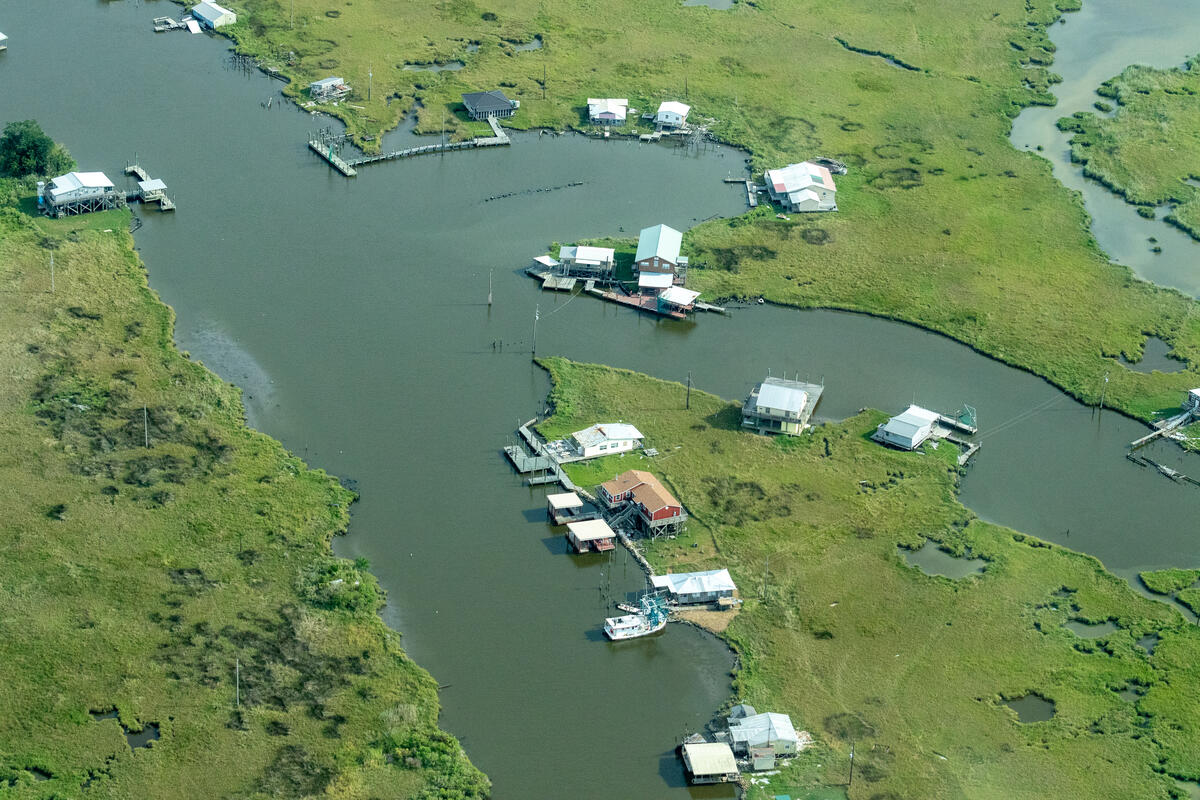Just weeks ahead of the 20th anniversary of Hurricanes Katrina and Rita, coastal Louisiana is facing a devastating blow to the incredible work that has been done since those tragic storms to reverse land loss and reclaim the title of the Great Bayou. The Mid-Barataria Sediment Diversion Project (MBSD), a groundbreaking effort to restore land loss, has officially been killed by the Landry administration.
The MBSD project was not created lightly, but rather, through a years-long bipartisan collaboration of stakeholders. It had been studied for decades, scrutinized in dozens of scientific reports, included in 4 statewide Coastal Master Plans, discussed in tens of thousands of public comments and compared against several alternative locations, sizes and other restoration options. Community input was a crucial aspect of the project’s development, showcasing the public’s support for the project, while developing detailed plans to mitigate the impacts to other bay users and businesses. Finally, in 2023, the project broke ground on a 5-year construction plan.
The MBSD project was conceived out of one of Louisiana’s most critical issues: land loss. The state’s coastal wetlands and floodplains provide a natural flood buffer zone to manage sea level rise and extreme storm surges, reducing flood risk for people and businesses. Yet, hurricanes, natural subsidence (sinking of land), sea level rise, unchecked oil and gas activities and the cutting off the Mississippi River from the delta have caused the rate of land loss in southeastern Louisiana to be among the highest in the world. Some estimate the state loses a football field of land every 100 minutes. Yet, unlike other coastal areas of the world, Louisiana’s solution sits right at its doorsteps: the land-building power of the Mississippi River.
The “muddy Mississippi” as many call it teems with nutrient rich sediment that historically, during Spring high water season, has fed the floodplains, regularly building new land in coastal Louisiana. While it may be strange to consider, here in New Orleans, we sit among the newest land in North America, in the context of the rest of the continent’s geological history.
Running alongside the river sits the levee system. Levees date back to the 1700’s and have grown significantly, providing important storm buffering for communities and ecosystems–a critical barrier to riverine flooding. Yet these levees have severed the connection between the Mississippi River and the delta. Here in southeast Louisiana, we need these levees to protect lives and homes. But there is a way to maintain them while also reconnecting the Mississippi River back to its wetlands: through the strategic use of sediment diversions. These diversions send the river’s waters and sediment to target areas of the delta, rebuilding the critical wetlands and floodplains, which in turn help protect the levees creating a dual layer of protection for communities.
Sediment diversion projects are a critical part of coastal restoration. But despite the importance of this work, Governor Landry, who took office only a year and half ago, has halted the project with no scientific studies shared, zero public input and a plethora of closed-door negotiations with business interests.
The lack of transparency by the Landry administration stands in stark opposition to the robust, inclusive and fully transparent process that brought the MBSD project into existence. The public should be meaningfully informed and given opportunities to make their voices heard on a project supported by 82% of residents.
There is no time left for Louisiana and its communities who have experienced flooding after flooding each hurricane season.










